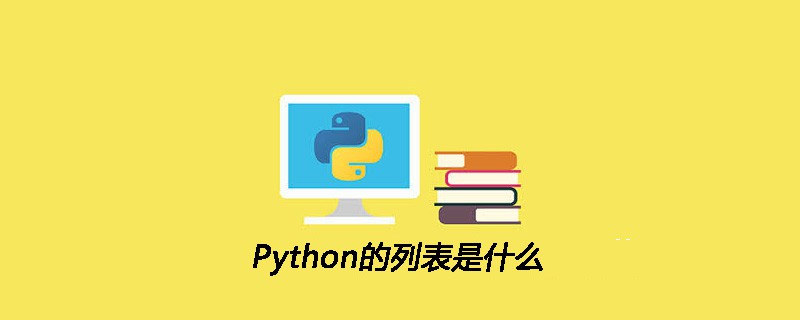Python的列表是什么

一、列表格式
列表名 = [列表元素1,列表元素2,列表元素3,… ]
说明:
1.列表元素之间是有顺序的,也是通过下标表示,第一个元素的小标为0。
2.列表元素可以不是同种类型,任何类型都行。
3.列表通常当做容器,用来存放多个元素。
二、列表的遍历循环
for循环遍历列表
nameList = ["张三","李四","王五","赵六"] for name in nameList: print(name)
运行结果如下:
张三 李四 王五 赵六
while循环遍历列表
nameList = ["张三","李四","王五","赵六"] i= 0 while i<len(nameList): print(nameList[i]) i+=1
运行结果如下:
张三 李四 王五 赵六
三、列表的相关操作
1、append:通过append可以向列表添加元素
nameList = ["张三","李四","王五","赵六"]
print(nameList)
print("----------------分界线-----------------")
nameList.append("侯七")
print(nameList)
运行结果如下:
['张三', '李四', '王五', '赵六'] ----------------分界线----------------- ['张三', '李四', '王五', '赵六', '侯七']
2、extend:可以将另一个集合中的元素逐一添加到列表中
listA = [1,2] listB = [3,4] listA.extend(listB) print(listA)
运行结果为:[1, 2, 3, 4]
3、insert(index, object) 在指定位置index前插入元素object
numList = [1,2,3,4] numList.insert(0,"a") print(numList)
运行结果为:['a', 1, 2, 3, 4]
相关推荐:《Python相关教程》
4、通过下标修改元素
numList = [1,2,3,4] numList[1] = "A" print(numList)
运行结果为:[1, 'A', 3, 4]
5、查找元素
in(存在),如果存在那么结果为true,否则为false
not in(不存在),如果不存在那么结果为true,否则false
numList = [1,2,3,4]
if 2 in numList:
print("2在numList里面")
else:
print("2不在numList里面")
运行结果为:2在numList里面
6、index和count:用法和字符串中差不多
strList = ['a','b','c','d','a','b','b']
ind = strList.index('b')
con = strList.count('b')
print(ind)
print(con)
打印结果为:0和3。index也是会找到第一个满足情况的后面就不会再找了
7、删除元素
del:根据下标进行删除
pop:删除最后一个元素
remove:根据元素的值进行删除
nameList = ["张三","李四","王五","赵六","侯七"] del nameList[2] print(nameList)
运行结果为:['张三', '李四', '赵六', '侯七']
nameList = ["张三","李四","王五","赵六","侯七"] nameList.pop() print(nameList)
运行结果为:['张三', '李四', '王五', '赵六']
nameList = ["张三","李四","王五","赵六","侯七"]
nameList.remove("李四")
print(nameList)
运行结果为:['张三', '王五', '赵六', '侯七']
8、排序(sort,reverse)
numList = [1,4,3,5,2] numList.reverse() print(numList)
运行结果为:[2, 5, 3, 4, 1],倒序
numList = [1,4,3,5,2] numList.sort() print(numList)
运行结果为:[1, 2, 3, 4, 5],升序
numList = [1,4,3,5,2] numList.sort(reverse = True) print(numList)
运行结果为:[5, 4, 3, 2, 1],降序
来源:PY学习网:原文地址:https://www.py.cn/article.html

